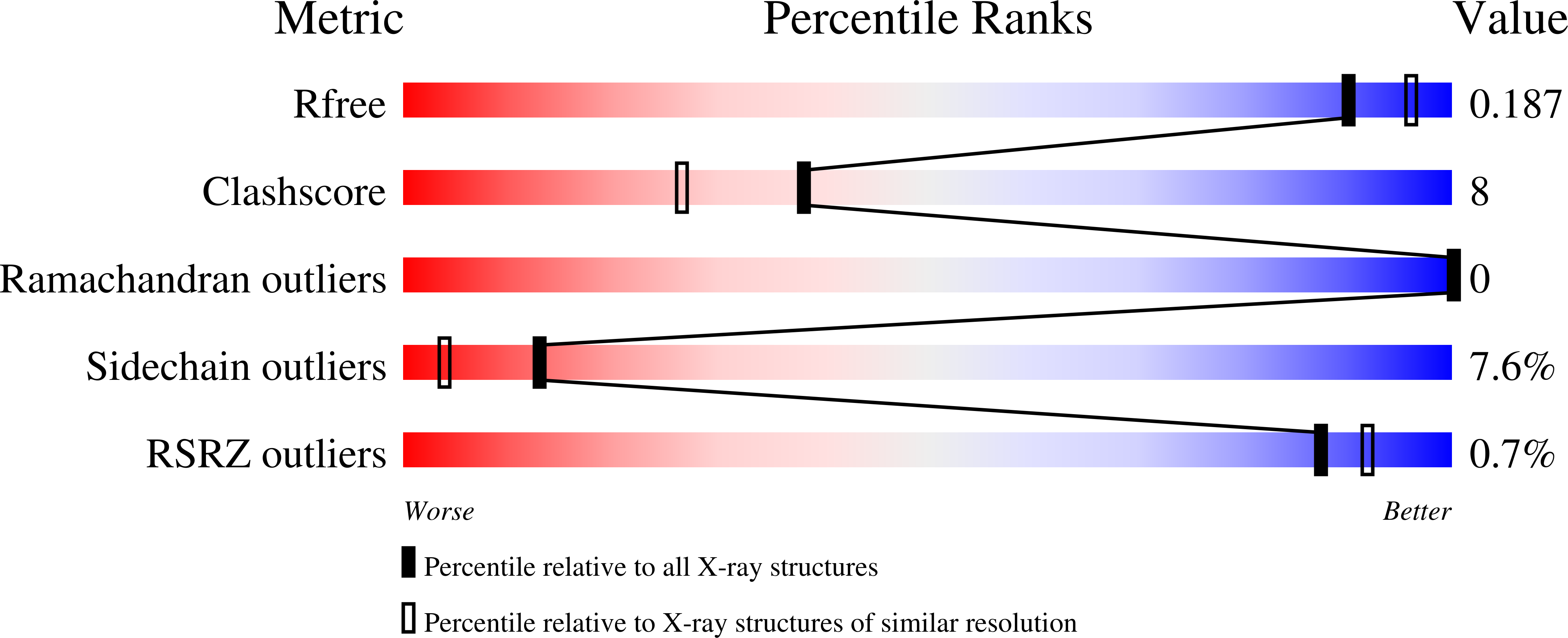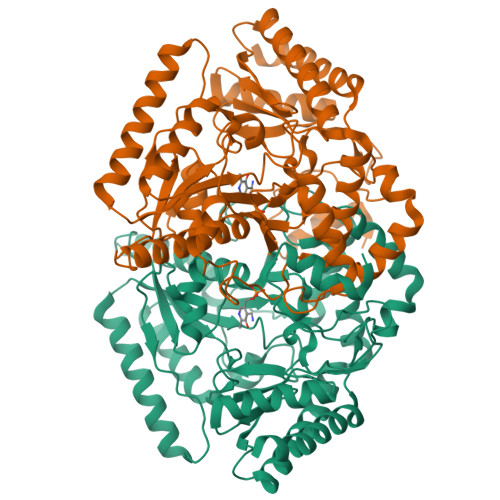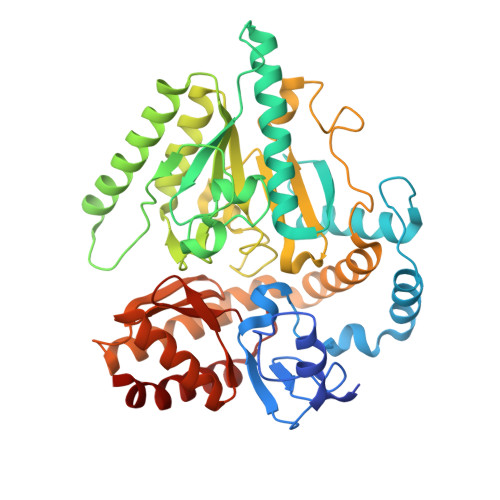Direct Evidence for a Glutamate Switch Necessary for Substrate Recognition: Crystal Structures of Lysine Epsilon-Aminotransferase (Rv3290C) from Mycobacterium Tuberculosis H37Rv.
Tripathi, S.M., Ramachandran, R.(2006) J Mol Biology 362: 877
- PubMed: 16950391
- DOI: https://doi.org/10.1016/j.jmb.2006.08.019
- Primary Citation of Related Structures:
2CIN, 2CJD, 2CJG, 2CJH - PubMed Abstract:
Lysine epsilon-aminotransferase (LAT) is a PLP-dependent enzyme that is highly up-regulated in nutrient-starved tuberculosis models. It catalyzes an overall reaction involving the transfer of the epsilon-amino group of L-lysine to alpha-ketoglutarate to yield L-glutamate and alpha-aminoadipate-delta-semialdehyde. We have cloned and characterized the enzyme from Mycobacterium tuberculosisH37Rv. We report here the crystal structures of the enzyme, the first from any source, in the unliganded form, external aldimine with L-lysine, with bound PMP and with its C5 substrate alpha-ketoglutarate. In addition to interaction details in the active site, the structures reveal a Glu243 "switch" through which the enzyme changes substrate specificities. The unique substrate L-lysine is recognized specifically when Glu243 maintains a salt-bridge with Arg422. On the other hand, the binding of the common C5 substrates L-glutamate and alpha-ketoglutarate is enabled when Glu243 switches away and unshields Arg422. The structures reported here, sequence conservation and earlier mutational studies suggest that the "glutamate switch" is an elegant solution devised by a subgroup of fold type I aminotransferases for recognition of structurally diverse substrates in the same binding site and provides for reaction specificity.
Organizational Affiliation:
Molecular and Structural Biology Division, Central Drug Research Institute, Chattar Manzil, Mahatma Gandhi Marg, Lucknow-226001, India.



















